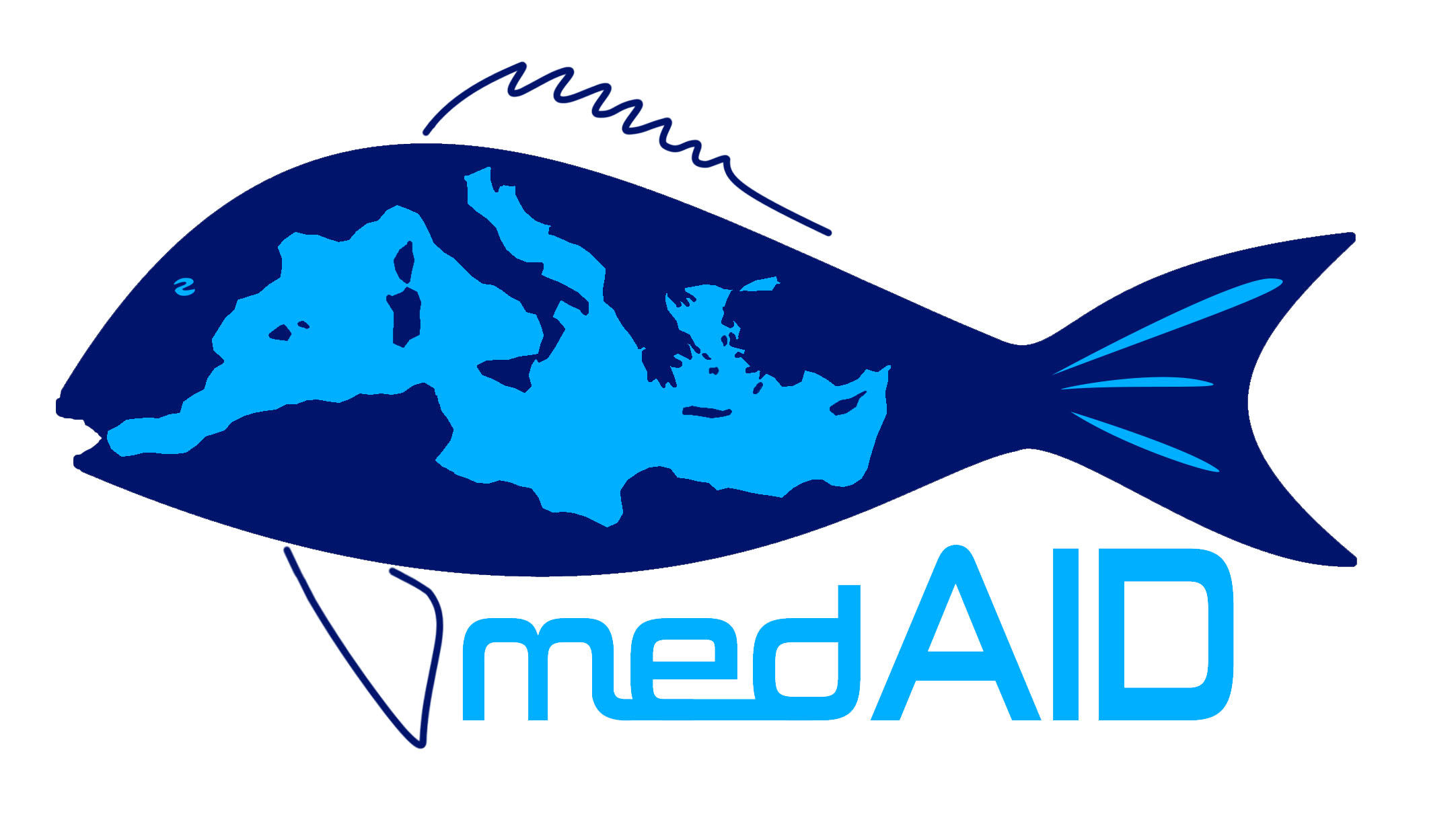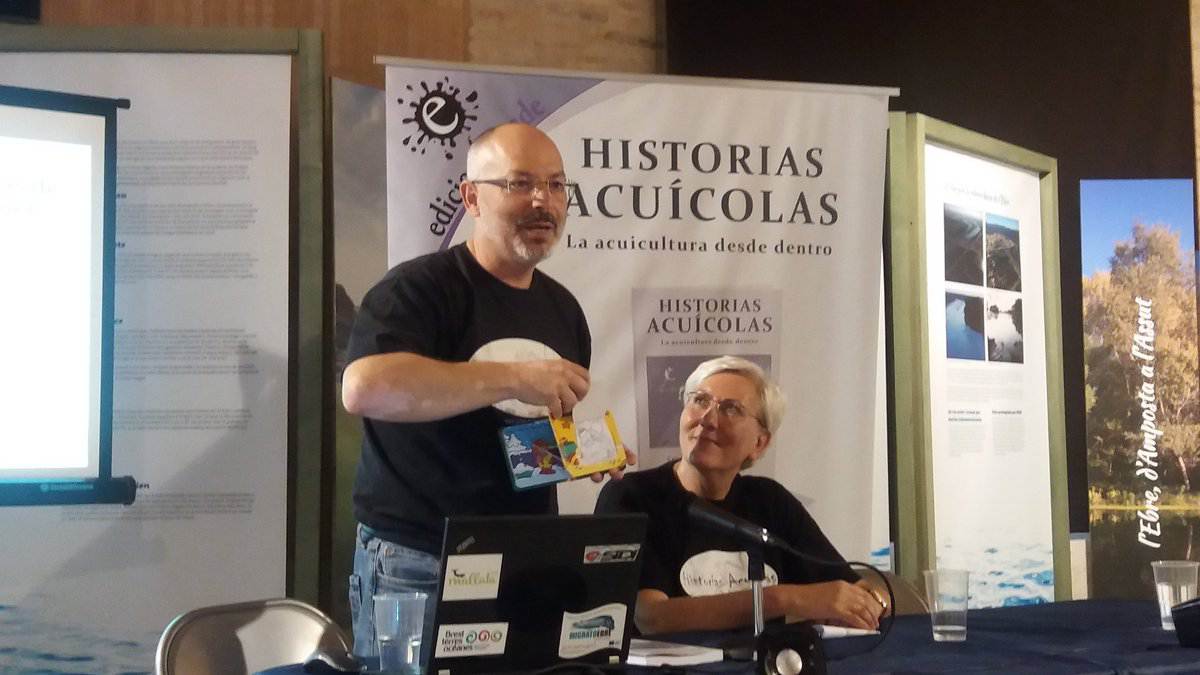“Together with energy sourcing, the greatest challenge faced by Humanity in the forthcoming decades will be that of feeding the 9600 billion inhabitants of the planet Earth by 2050.
In order to rise to this challenge, aquaculture is one of the most viable alternatives to provide Humanity with the necessary protein. It currently plays a vital role worldwide in the fight to eradicate hunger and malnutrition, providing protein-rich food, essential oils, vitamins and minerals for a wide sector of the population. Looking to the future, FAO estimates that by 2030 over 65% of seafood will come from aquaculture”.
Today in “A talk with the experts” we take a look inside the Institute for Research and Technology in Food and Agriculture (IRTA) to learn about aspects related to their line of research and how they back innovation. We will be guided by Cristóbal Aguilera Jiménez (@CAguilera2), Innovation Manager and author of the blog on aquaculture: Historias acuícolas: La acuicultura desde dentro.
Hello Cristóbal. Welcome to the Research Social Media! Tell us about IRTA and its main objectives
Hello, it’s a real pleasure to be on the Research Social Media. IRTA is a research institute that depends on the Generalitat, attached to the Department of Agriculture, Livestock, Fisheries, Food and the Environment, although it is governed by private legislation. This is a significant fact, as it gives the organisation a certain degree of flexibility, making it a distinguishing feature.
IRTA’s main objective is to help increase food production through research and technological development in the context of a changing world that will need sustainable intensification to guarantee food production, despite the high impact of climate change. We mustn’t lose track of where we are going (feeding tomorrow’s world and integrated health). We define this as One Health. This challenge is by no means small, but it is an exciting one.
One of your research programmes is based on aquaculture. Can you tell us about it?
We could simplify this by saying that aquaculture is another way of saying sea farming, but it’s much more than that as it involves the production of fish, molluscs, crustaceans and algae in marine and continental environments. It includes a wide diversity of species (possibly over 400 worldwide) and a multitude of production systems. From the extensive use of natural areas to the application of the latest technologies in highly complex, efficient and intensive systems, for example recirculation systems or offshore cages that are practically autonomous. This production is safe, healthy and high quality, similar to any other farming practice, perhaps even more so. It pursues an essential objective, to guarantee protein of marine origin to help feed a growing population.
What are the pros and cons of developing this type of practice?
We should start by saying that livestock farming is the most likely to grow, not just due to the fact that 70% of the Earth’s surface is water, but because the alternatives are becoming scarce. I say this because we are have practically exhausted the productive capacity of the oceans and continental waters, that is, if we haven’t done so already. Too much pressure for too many years. We can’t get any more out of them and yet, the per capita consumption of seafood has doubled in half a century. This has been thanks to aquaculture. Of course not everything is acceptable and although aquaculture already produces over half of the seafood that we consume, we cannot allow this to happen at any price. We hear about “the blue revolution” and, “the miracle of the fish”… This is feasible provided that we show utmost respect for the environment and learn to manage it properly to make sure that together with capture fisheries this can be possible. The main problems that we come across are almost always related to the use of space, competing with tourism, industry and other uses (most of the population live in coastal areas) which do not seem to be compatible with each other. In fact they would be compatible if regulations and governance were adapted accordingly.
The downside is that we depend on these highly appreciated valuable areas and on fishmeal that comes from capture fisheries. Knowledge should be gathered and integrated to ensure aquaculture’s future as we will still want to enjoy fresh, healthy, reasonably priced seafood, be ethically and socially responsible and at the same time look after the environment.
What can you do at IRTA to enhance the public’s perception of aquaculture products that are normally perceived to be of lower quality?
This is one of the aspects that those of us working in aquaculture still have to overcome from industry through producers, traders and opinion leaders as well as from research and possibly the Administration. To date we haven’t been capable of transmitting the right information about what we do. Having said that, the surveys and studies that IRTA has been involved in have shown that the public are more aware of aquaculture and it has a less negative perception nowadays. We can say that half of the population know what aquaculture is and accepts aquaculture practices and products. New publicity campaigns, participation in cookery programmes, blogs, talk shows and contact with schools is raising the public’s awareness of aquaculture. I think that rather than change people’s perception if they already have an opinion, we are working and quite rightly so, towards providing quality, contrasted knowledge so that citizens can form their own opinion based on facts. This is what we most need as we do not communicate enough and we don’t know how to transmit what we do”.
And do you do this personally from your aquaculture blog?
Ah, that’s my own personal battle. I realised that by explaining what I did on a regular basis and using the normal channels I was only reaching my professional peers and a handful of people that were curious. Scientific and technical knowledge is essential, but the information was not reaching the rest of the population. That’s why I reinvented my blog and through humour, irony and simple concepts, I started to talk about what I have been doing for years in my own words and in a humorous tone. The social media and new technologies have done the rest. And we mustn’t forget the help of an exceptional illustrator, my brother Jesús (Aguilera).
Is there any connection between aquaculture and GMOs?
There is in fact a company called AquaBounty that produces and sells GM salmon, the first GM invertebrate. It is in the process of being totally approved in the USA but this is impossible in Europe. So, apart from that experience and scientific and technical knowledge, no, there isn’t a connection between aquaculture and GMOs. I don’t know what the future will hold. We are approaching a revolution with genome editing and I think that there will be a substantial impact, not only in aquaculture, but across all the sciences. We will be seeing some surprising things.
One of the big challenges today is how to face climate change. At IRTA you are working to create strategies to mitigate the impacts of the food and agriculture sector within a climate change context. What projects would you mention?
We are in the midst of a deep strategic reflexion revolving around more production with fewer resources. Adaptation to climate change is fundamental and is very much present in almost all the projects that are developed. To mention just a few, some seek to integrate the production processes, others develop alternative strategies to intensify production, or target re-use and waste reduction, renewable energy, reduction of soil and sea degradation, water use efficiency at all phases, new varieties adapted to change and recovery of old varieties. Projects working on technology target the Internet of Things IoT and knowledge.
The use of ITs has also appeared on the scene of agricultural research. In the case of drones, what are their main applications and what are their benefits?
A drone is an interesting and important tool, but so is a tractor, or a fish cage or a robot. What really gives value is the integration of the knowledge that we develop through study and analysis that is then transformed into algorithms and that enables us, with this help of a drone, or a probe on a tractor, or a robot out at sea, to monitor, obtain information, process it and provide a response to extremely complex events that require an enormous amount of data. Knowledge and technology, together with Big Data analysis and the use of tools like drones is making a new revolution possible. I recommend a recent article published in The Economist this year called The future of agriculture . It gives a good account of where we are and where we are going. Very interesting and illustrative.
Describe your work as innovation manager at IRTA
More or less, I normally describe it as listening to everyone, trying to understand and transform their message into something that others can understand and respond to. It’s like adjusting a dial to tune into a radio station. This ability to tune in has enabled me to hear and understand, learning constantly along the way and developing skills that go beyond the simple acquisition of knowledge. For example, integrating and analysing information in order to propose alternatives and explore routes of action. In a nutshell, the effort that those of us that do this job make, has more to do with determining the precision of the language used by a given community and lining it up with requirements. This brings together creativity, innovation and focus on the expected result. It will not always be the most popular solution, but it will be the most effective.
Besides finance, what are the main problems facing research centres in Spain to set up innovation projects?
In the last 10 years a great deal of muscle has been lost in the science and innovation system of the country. So much so that for the time being I think that the process is irreversible. Even if we suddenly found ourselves with the same level of financing as 10 years ago, it still wouldn’t be possible to recover everything that has been lost. Rather than talking about problems, we really face just ONE problem, and that is that the country has not backed a knowledge-based growth policy. The fact is that fierce competition for funds has meant that projects have become more sophisticated and imaginative. But many other projects are needed, especially those that support new generations of scientists and technologists. Without finance, there will be no new generations, no new ideas and no future. Unless…
IRTA is a powerful research centre in technology transfer, what do you think the keys for this have been?
Not falling into our comfort zone and staying close to the main stakeholders in the agro food chain. Through understanding the present and being able to visualise diverse future scenarios in the food sector and imagining the future of the sector, driving changes in the organisation and favouring research that is more oriented towards the priority challenges facing society and the food sector.
I’ve seen on your website that you are also engaged in scientific dissemination and you have even collaborated in an inclusive science project with the Municipal Institute of Barcelona for People with Disabilities. What can you tell us about this project?
Our 2016 report says that between research projects and contracts there have been more than 1300 actions have been taken. It’s impossible to keep track of them all. Transfer and communication is inherent in IRTAs strategy and has a huge impact on what we do. The dissemination of knowledge in plant production is particularly evident because of its importance for the territory. This project, that I am not very familiar with, apart from the in-house information that we receive, is led by my colleagues from the environmental horticulture programme and links several points that we have spoken about earlier. They visualise the future through the development of urban agriculture. They are close to society and engage it as is the case of the IMPD of Barcelona. For example, a city garden on a terrace managed by people with disabilities, making use of technology and collaborating with experts is a marvellous project pursing social, economic and environmental values.
What other scientific dissemination projects would you mention?
There are too many exceptional things to mention. The best thing is to take a look at our website or download our 2016 activity report. It’s an enjoyable read.
Thank you for accepting our invitation Cristóbal!

Author: Lydia Gil
This interview has been translated. Interview originally published in the blog Social media en investigación.

